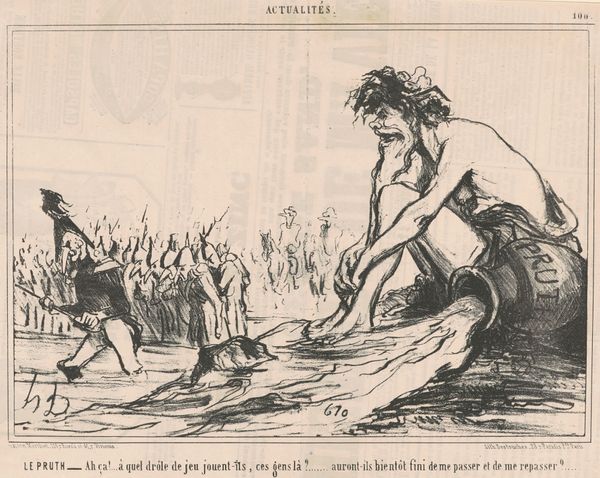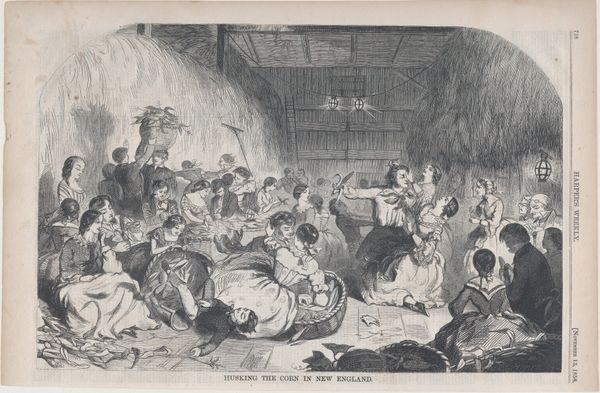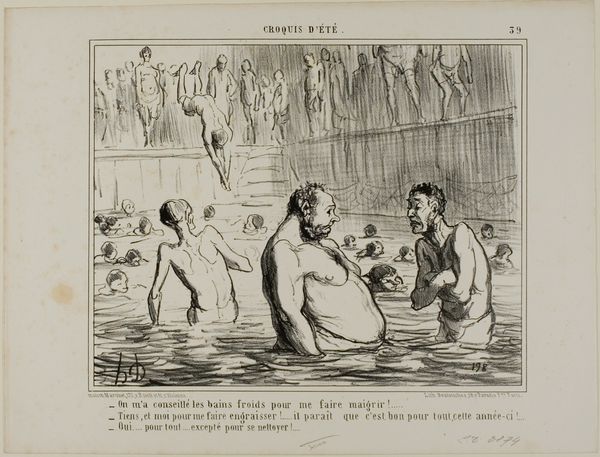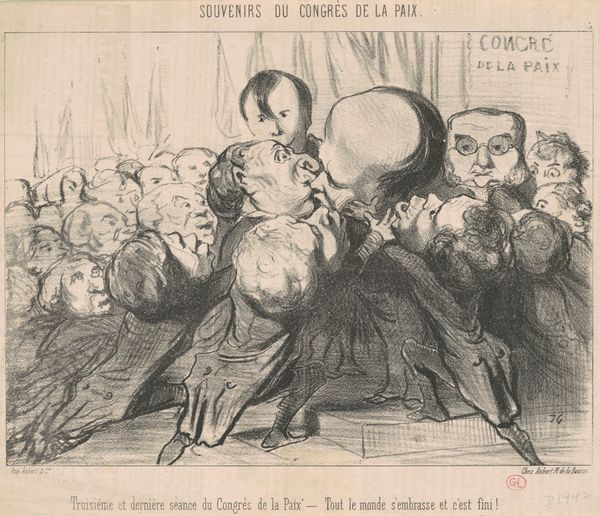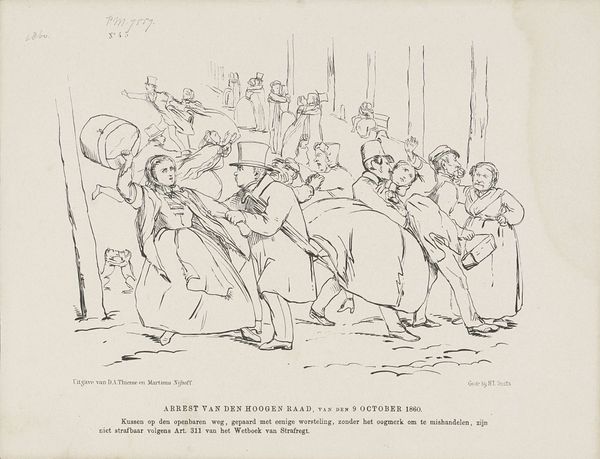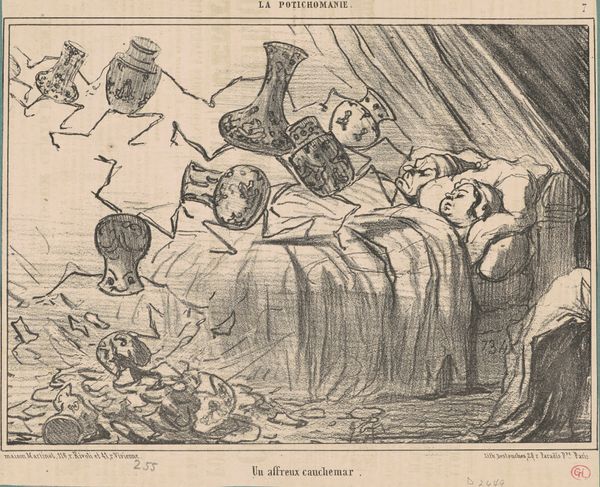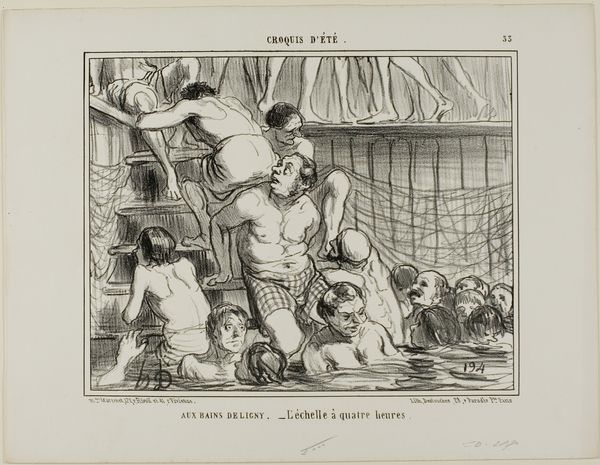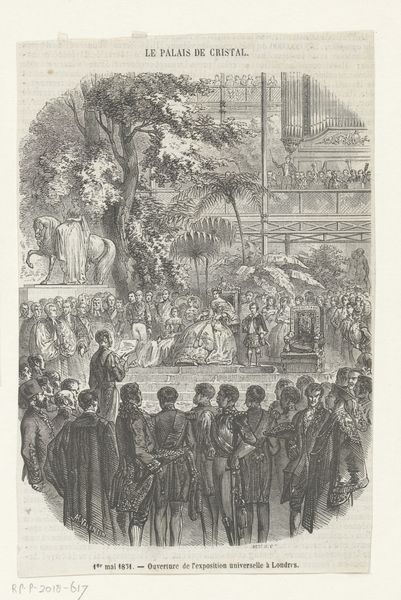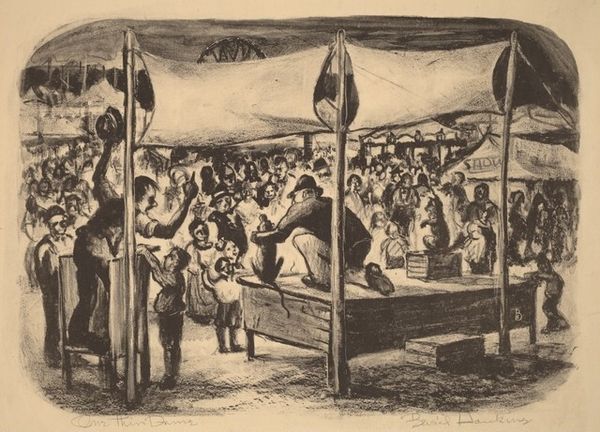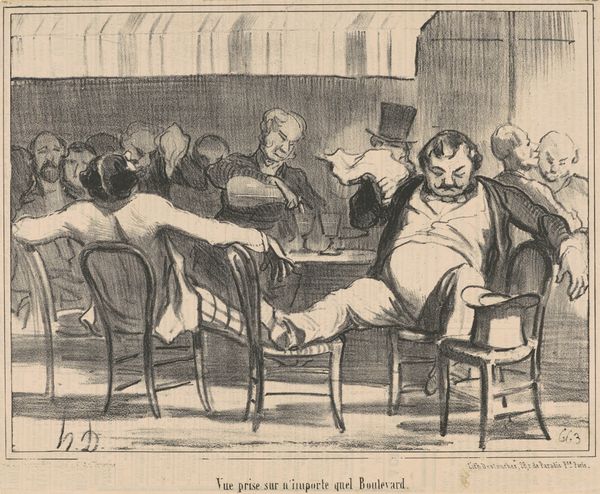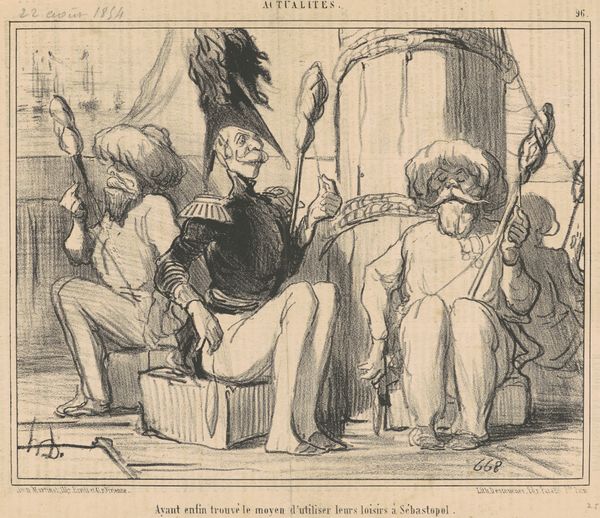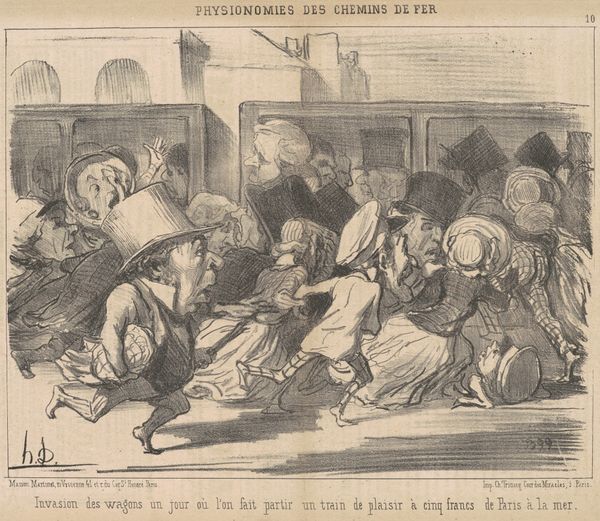
drawing, lithograph, print, ink
#
drawing
#
lithograph
# print
#
caricature
#
ink
#
genre-painting
#
realism
Copyright: National Gallery of Art: CC0 1.0
Curator: Here we have Honoré Daumier's lithograph from the 19th century, "Vue prise aux bains à quatre sous." It translates to something like "View of the four-sou bathhouse." Editor: Wow, "sou" is not a lot of money! You definitely get what you pay for: a chaotic, claustrophobic scrum. It's like a Hieronymus Bosch painting, but for bathers! Curator: Exactly! Daumier captures the density of Parisian life in the mid-1800s. Look at the composition; there are layers of bodies crammed into a shallow space, punctuated by exaggerated expressions. Note that Daumier uses line masterfully to delineate each figure, highlighting their individuality amidst the throng. Editor: Individuality? I don't know. They all seem caricatured, stripped down to base, almost grotesque forms. Is he being satirical? I see desperation, or at least profound discomfort. Curator: Most definitely! Daumier used caricature to critique society, holding a mirror up to the lives of ordinary people—though perhaps a warped mirror. Notice how he groups the figures, creating social commentary through juxtaposition. Wealthier folks enjoy the upper-level walkway, distanced and elevated from the plebeians below in the communal baths. Editor: Oh, I see that now! So, class divisions literally built into the architecture of the bathhouse. Clever! I initially saw only chaos, but now, through a formal lens, there is clearly a message. Daumier isn't simply recording a scene; he’s making a statement about inequity. The ink strokes aren't just marks on paper, but cries of dissent. Curator: Precisely. And his background in printmaking and social realism combined to make a pretty potent concoction that remains powerful and thought-provoking, even today. The "four-sou" price tag says so much. Editor: Makes you appreciate a private shower! It’s a stark reminder that access and space are always luxuries, culturally relevant then as it is now.
Comments
No comments
Be the first to comment and join the conversation on the ultimate creative platform.
